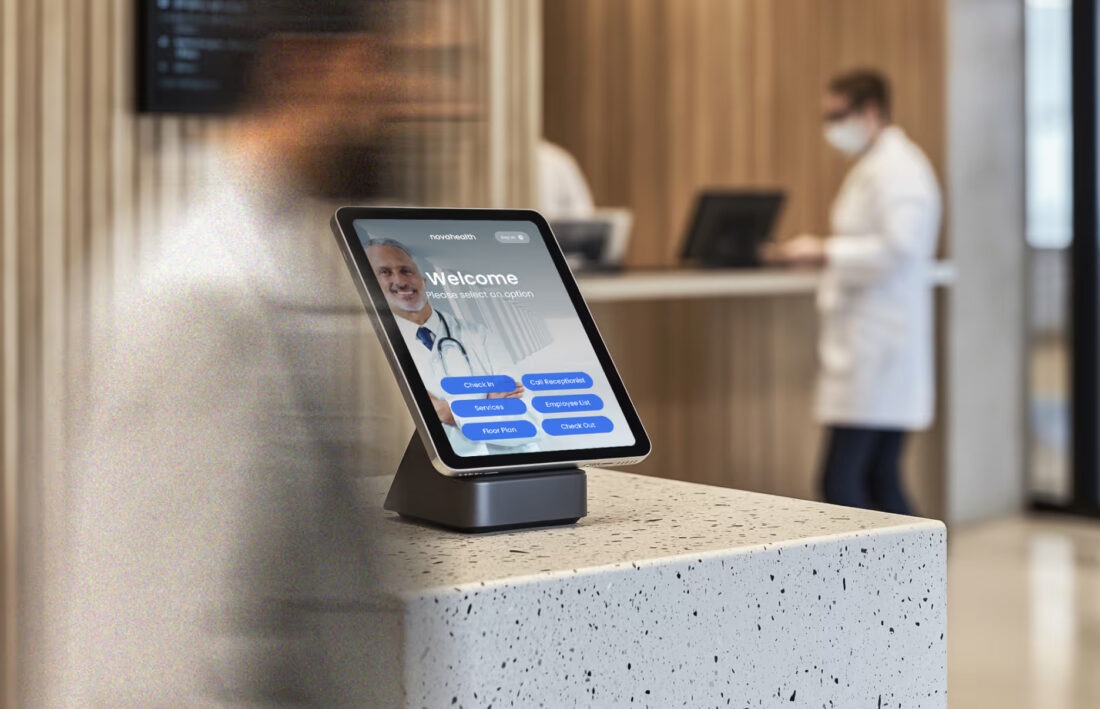The role of the front desk in any medical practice is undeniably important. It serves as the first point of contact for patients, handles appointments, and manages patient flow. However, as technology continues to evolve, practices are now exploring the potential benefits of replacing traditional front desk staff with a virtual medical receptionist. But is this shift the right choice for your practice? In this article, we will examine the advantages and disadvantages of replacing your front desk with a virtual medical receptionist, helping you make an informed decision.

What Is a Virtual Medical Receptionist?
A Medical Staff Relief virtual medical receptionist is a professional who provides administrative support remotely. This person can manage tasks such as answering calls, scheduling appointments, verifying insurance, handling patient inquiries, and more—much like a traditional front desk receptionist. The key difference is that a virtual medical receptionist operates remotely, often from a different location, using various communication tools to interact with patients and staff.
Advantages of Replacing Your Front Desk with a Virtual Medical Receptionist
Cost Savings
One of the most significant advantages of opting for a virtual medical receptionist is the potential for cost savings. Traditional front desk staff require salaries, benefits, and overhead costs such as office space, equipment, and utilities. With a virtual medical receptionist, you can eliminate many of these expenses, often paying only for the services you need. This reduction in costs can allow you to allocate resources to other areas of your practice, such as improving patient care or upgrading medical equipment.
Increased Efficiency
A virtual medical receptionist can streamline many of the tasks traditionally handled by front desk staff. They are often skilled in managing multiple appointments, handling patient calls, and addressing inquiries quickly and efficiently. Since they are not physically limited to office hours, they can work around the clock to handle tasks such as scheduling, follow-ups, and appointment reminders. This increased efficiency can reduce wait times, improve patient satisfaction, and ensure that your practice runs more smoothly.
Flexibility and Scalability
Virtual medical receptionists offer greater flexibility compared to traditional front desk staff. For practices with fluctuating patient volumes, having a virtual receptionist allows for easy scalability. You can increase or decrease the amount of time or services based on the demand of your practice. This flexibility ensures that your practice is not overstaffed or understaffed, which can be a common issue with traditional front desk operations.
Improved Patient Experience
Patients today expect convenience and accessibility, and a virtual medical receptionist can help enhance the overall patient experience. With a virtual receptionist, patients can reach your practice at any time of day or night, even when your physical office is closed. Additionally, virtual receptionists can provide quick responses to patient inquiries, schedule appointments more efficiently, and offer personalized care by maintaining a detailed record of patient interactions. All of this contributes to a smoother and more patient-centered experience.
Remote Accessibility
A virtual medical receptionist can work from anywhere, offering the flexibility to manage your practice’s administrative tasks from virtually any location. This remote access is especially valuable in cases where the practice operates in multiple locations or has varying office hours. Virtual receptionists can serve as a centralized hub for managing patient communication across different sites, ensuring consistency and reliability in the services provided.
Challenges to Consider When Replacing Your Front Desk
Loss of Personal Touch
While a virtual medical receptionist can handle many tasks effectively, it is important to acknowledge that they may not be able to replicate the personal connection that comes with in-person interactions. Some patients may prefer speaking with a live receptionist in person, especially when dealing with sensitive health concerns or when they are anxious about upcoming medical appointments. Replacing the front desk with a virtual receptionist may make your practice feel less personal, potentially leading to dissatisfaction among some patients.
Technological Barriers
A virtual medical receptionist relies heavily on technology to communicate with patients and manage appointments. If your practice’s technology infrastructure is not robust enough, it could lead to disruptions in service. Additionally, patients who are not comfortable with digital communication may find it difficult to navigate the process. It is essential to ensure that your practice has the necessary technological tools and support to implement a virtual receptionist system effectively.
Potential for Miscommunication
With a virtual receptionist, communication may be more prone to errors, particularly when dealing with complex patient inquiries or detailed medical information. Since virtual receptionists operate remotely, there is a potential for misunderstandings or missed messages, especially when there are language barriers or technical issues. To mitigate this risk, it is essential to have clear communication protocols in place and ensure that the virtual medical receptionist is well-trained and familiar with the practice’s operations.
Privacy and Security Concerns
Medical practices must adhere to strict privacy regulations, such as the Health Insurance Portability and Accountability Act (HIPAA), to protect patient information. When using a virtual medical receptionist, it is crucial to ensure that the service complies with these regulations. Depending on where the virtual receptionist is located, there may be additional considerations regarding data security, encryption, and compliance with HIPAA standards. Failure to address these concerns could put your practice at risk of data breaches or legal consequences.
How to Decide if a Virtual Medical Receptionist Is Right for Your Practice
Evaluate Your Practice’s Needs
Before making the decision to replace your front desk with a virtual medical receptionist, it is essential to evaluate your practice’s specific needs. Consider factors such as patient volume, office hours, the complexity of patient interactions, and your current staffing levels. If your practice has high patient traffic or frequently deals with complex administrative tasks, a virtual medical receptionist may be a good fit. However, if your practice relies heavily on in-person communication or requires a high level of patient interaction, you may want to consider maintaining a physical front desk.
Consider Your Budget
Budget constraints are often a driving factor in considering a virtual medical receptionist. However, it is essential to assess the long-term cost-effectiveness of this option. While virtual receptionists can offer savings in salaries and overhead, you may need to invest in technology, training, and compliance measures. Assessing your budget carefully will help you determine whether the switch is financially viable for your practice.
Test the Waters with a Hybrid Model
For practices that are hesitant to fully replace their front desk with a virtual medical receptionist, a hybrid model may be a good compromise. In this scenario, you can keep a small in-person staff to handle sensitive tasks while using a virtual receptionist to handle routine administrative duties. This approach can allow you to test the waters and determine whether the virtual model works well for your practice without making a complete transition.
Choose the Right Virtual Medical Receptionist Service
If you decide to move forward with a virtual medical receptionist, choosing the right service is critical. Not all virtual receptionist services are created equal, and selecting one that fits your practice’s needs is essential. Look for a service that is HIPAA-compliant, offers clear communication protocols, and has a track record of reliability. Be sure to ask for references and consider conducting a trial period to assess their performance.
Conclusion
Replacing your front desk with a MSR virtual medical receptionist offers numerous benefits, including cost savings, increased efficiency, and improved patient experience. However, it is not without its challenges, such as potential loss of personal touch and privacy concerns. Ultimately, the decision depends on your practice’s specific needs, budget, and the willingness to embrace new technology. By carefully considering these factors and selecting the right service, you can make an informed decision that enhances your practice’s operations while maintaining the quality of care for your patients.



